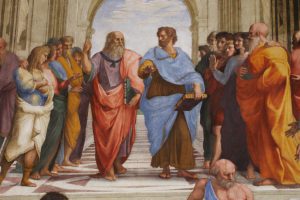When making the trip to and from school, I usually go with the route that gets me from the train station to the school building as quickly as possible. The fast route however, is somewhat stressful. When you take into consideration the clusters of people, the constant chatter, the sound of honking cars, and an oddly overwhelming need to walk as quickly as those around you, you’ll soon realize how this short five minute walk can lead to increased levels of stress and a lack of focus in the classroom. I happen to be an anxious person, so having to deal with a hectic speed walking crowd every morning isn’t exactly desirable. My heart starts pounding, my palms start sweating, and my mind begins to race. Anxiety is the feeling of excessive worry – something I experience daily as a result. When I’m walking with that large group in Jay Street, my anxiety causes me to focus on every sound and move that is being made around me which muddles my mind quite a bit. Though the walk only lasts about 5 minutes or so, the anxiety doesn’t end immediately after the walk. I then have to take an elevator that may or may not be crowded because they’re generally faster than taking the stairs, and I don’t do well with crowds.
I found a new route that – though very time consuming compared to my established route – is leagues ahead of my current route in how relaxing it can be. This new route takes me through Columbus Park which has a very wide walkway where people can sit on benches on either side and simply relax, which is a heavy influence for how I feel while I walk through that park. But unless it’s lunchtime the park is empty and I can stroll through without a care in the world. This route allows me to enter on Adam’s street which grants me access to the Atrium building which then allows me to access the stairs that is seldom used. And considering the fact that I’d only be taking this route if I have time to spare, I wouldn’t have to rush up any stairs on my way to class.
Being left with a jumbled mind after taking my usual route leads to a state of disarray in my notebooks and the quality of notes that I take. The Attention Restoration Theory (ART) – introduced by Rachel and Stephen Kaplan (professors of psychology at the University of Michigan) – states that being in nature or nature-based environments increases cognitive function. This boost in cognitive ability – especially in the case of early morning classes can be the difference between a pass or a fail on an exam. Not only does nature increase mental output, but it can also act as a form of stress relief. So for students who have early morning exams, a walk through nature is not only aesthetically pleasing, but is beneficial in terms of performance.
A study done by Henk Staats and Terry Hartig (professors of psychology at Leiden University and Uppsala University, respectively) found that a walk through nature left subjects who had been mentally fatigued with a considerably positive outlook. Interestingly enough however, those who weren’t mentally fatigued at the start of the nature walk didn’t experience much of a change (for better or for worse) by the end of it. This only feeds into the idea that taking a walk through nature when stressed is more beneficial than when in any other state of mind.
While taking a quiet, relaxing walk through nature may seem to be something you’d do unaccompanied, there is evidence to suggest that nature walks with a group can be even more beneficial – and for longer periods of time. A study done by the University of Michigan and Edge Hill University in England found that walking in groups resulted in less depressive moods. The professors who conducted this experiment recommend taking short but frequent walks through nature to really see benefits. When on the subject of how forming a habit of walking through nature affected those in the study, lead author Sara Warber said this:
“After 13 weeks, those who walked at least once a week experienced positive emotions and less stress”
Warber and her co-authors recommend walking through nature at least 3 times a week. They also agreed that by taking short but frequent walks not only will people notice a decline in their stress levels, but they will also have an increase in overall positive emotions.
The benefits of nature are based on empirical evidence that can be vetted and verified by any and everyone. Nature can benefit more than just students with its ability to brighten moods and bring forth mental clarity, which is something that everyone could and should make use of.
Works Cited:
Kaplan, Stephen. “The Restorative Benefits of Nature: Toward an Integrative Framework.”Journal of Environmental Psychology, vol. 15, no. 3, 1995, pp. 169–182., doi:10.1016/0272-4944(95)90001-2.
Marselle, Melissa, et al. “Walking for Well-Being: Are Group Walks in Certain Types of Natural Environments Better for Well-Being than Group Walks in Urban Environments?” International Journal of Environmental Research and Public Health, vol. 10, no. 11, 2013, pp. 5603–5628., doi:10.3390/ijerph10115603
Van den Berg, Agnes E., Terry Hartig, and Henk Staats. “Preference for nature in urbanized societies: Stress, restoration, and the pursuit of sustainability.” Journal of social issues 63.1 (2007): 79-96.




